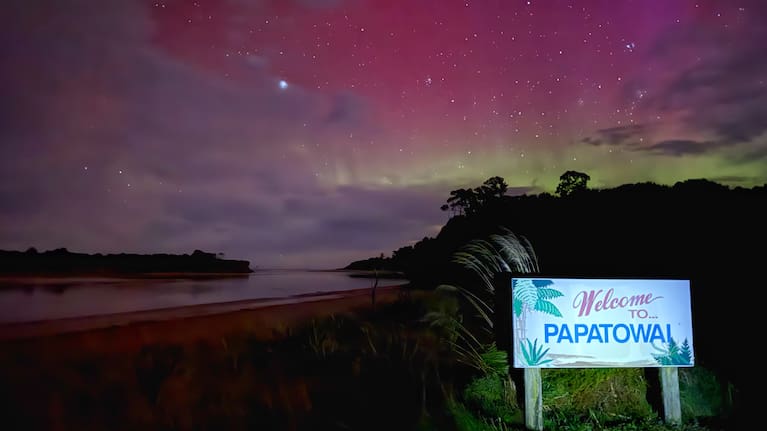Aurora Australis lit up the night sky across Otago last night, delighting residents with the “truly fantastic intensity of it”.
Otago University’s aurora alert website listed the event as a nine out of nine on their high geomagnetic activity scale, stating a “high chance for aurora to be visible with the naked eye” and “clearly visible with a camera”.
Catlins resident Nicole Peake shared her “incredible” images with 1News, taken with her iPhone between 9.30pm and 11pm in Papatowai, The Catlins and at Florence Hill Lookout last night.
“A massive solar flare eruption caused a 9/9 on the aurora scale, which meant the beams of light could be seen swaying in the sky with the naked eye and then with the assistance of my iPhone and ‘night mode’ for the long exposure, it really captured the amazing light beams, vibrant greens, pinks, purples and reds,” she said.
Although auroras are common in the Catlins Dark Sky, Peake said this one in particular was “truly fantastic due to the intensity of it”.
“We are very lucky not to have any light distortion in the Catlins, which meant we got to enjoy the full spectrum of light uninterrupted. The only other light source was the crescent moon, planets and stars.
“It was truly a magical moment,” she said.

According to NASA, the colour of the aurora depends on which gases are being agitated by electrons and how much energy was being exchanged.
“Oxygen emits either a greenish-yellow light (the most familiar colour of the aurora) or a red light; nitrogen generally gives off a blue light.
“The oxygen and nitrogen molecules also emit ultraviolet light, which can only be detected by special cameras on satellites.”

Royal Museums Greenwich said the main gases in Earth’s atmosphere were nitrogen and oxygen, and these elements gave off different colours during an aurora display.
“The green we see in the aurora is characteristic of oxygen, while hints of purple, blue or pink are caused by nitrogen.”













